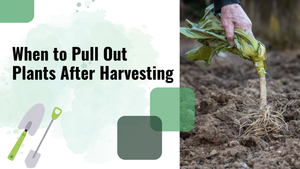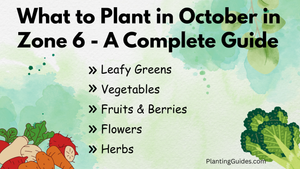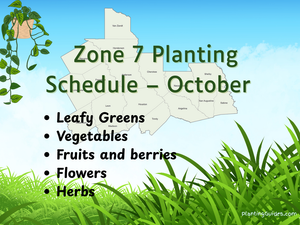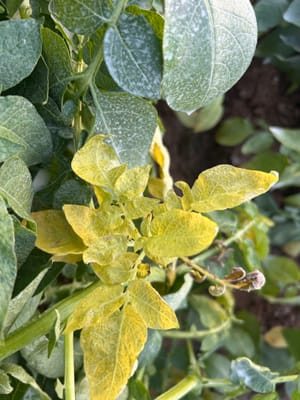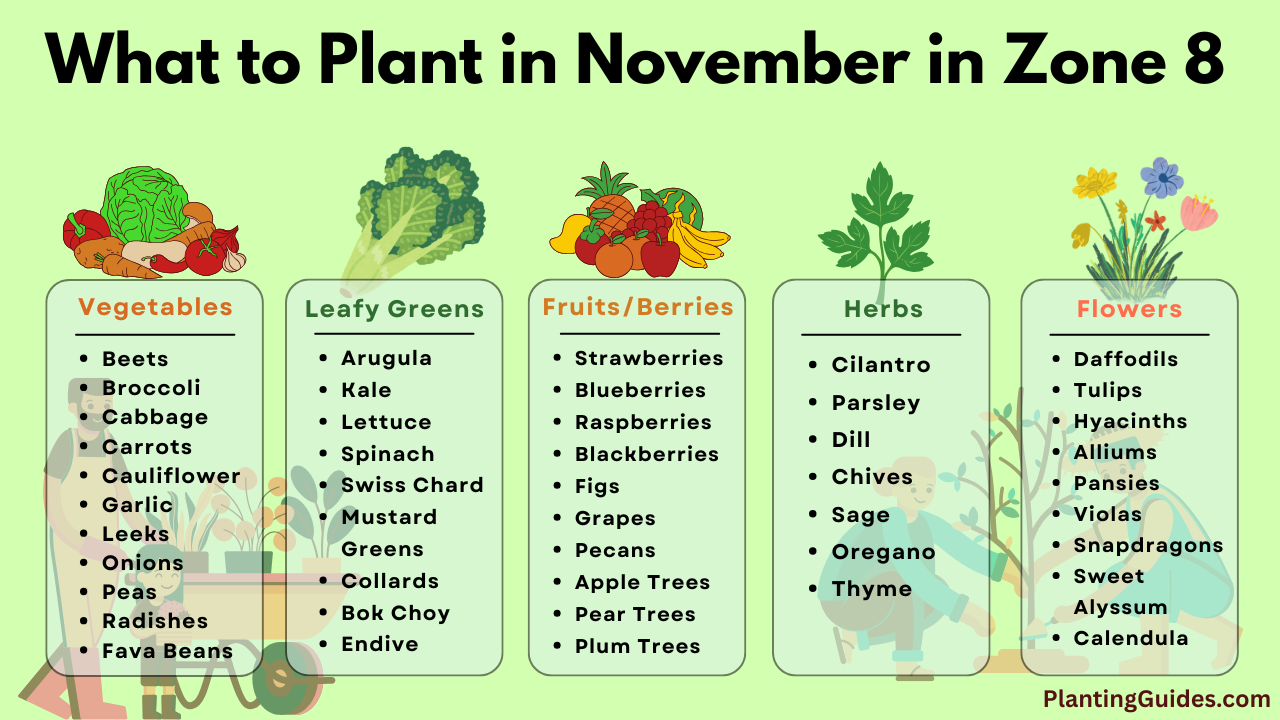
If you live in places like Texas Hill Country or parts of the Pacific Northwest, or anywhere in Zone 8, November might seem like the time to take a break from gardening. The mornings are cold, the days are short, and the frost is also another issue. But you know what the good news is — your gardening season isn't just over yet. It's the perfect time to switch in cool-season plants.
This month in Zone 8, the weather is cool but not freezing, and the first frost usually shows up around the middle of the month. So, you can still plant plenty of hardy veggies, leafy greens, herbs, and flowers that don't mind a bit of cold.
If frost hits, cover your plants with frost cloths, sheets, or row covers to protect them. You can water the soil before the frost hits and put mulch around the plants. This way, you can keep your plant's roots warm. Move your potted plants indoors or under shelter. Always check the forecast and be ready to protect your plants when the temperature drops below 32°F.
Leafy Greens to Plant in November in Zone 8
November is all about planting the right plants and keeping your plants safe. The soil is still good enough for seeds to germinate, but frost can appear overnight, so be ready to protect your plants.
Trust me, a simple sheet over your garden can save your plants from the frost.
| Leafy Green | Planting Method | Transplanting Time | First Harvest | Variety Recommendations |
|---|---|---|---|---|
| Arugula | Sow seeds directly ¼" deep, 1" apart | N/A | 30–40 days | Astro, Surfer (mild, bolt-resistant) |
| Kale | Sow directly or transplant 12–18" apart | 30–35 days | 50–60 days (leaves ready in 21) | Dwarf Blue Curled, Red Russian (sweetens after frost) |
| Lettuce (loose-leaf) | Sow ¼" deep, thin to 6" | N/A | 45–60 days | Black Seeded Simpson, Red Sails (cut-and-come-again) |
| Spinach | Sow seeds ½" deep, 2" apart | N/A | 40–50 days | Lavewa, Bloomsdale (cold-hardy, slow to bolt) |
| Swiss Chard | Sow or transplant 6–12" apart | 35–40 days | 50–60 days | Bright Lights (colorful stems, mild flavor) |
| Mustard Greens | Sow ¼" deep, thin to 4" | N/A | 30–40 days | Green Wave, Red Giant (spicy kick after frost) |
| Collards | Transplant 18" apart | 35–40 days | 60–70 days | Georgia Southern, Vates (tender after chill) |
| Bok Choy | Sow or transplant 6" apart | 20–25 days | 30–45 days (baby) | Baby Choi, Joi Choi (compact, fast-growing) |
| Endive | Transplant 8–10" apart | 35–40 days | 50–60 days | Tres Fine, Broadleaf Batavian (crisp, nutty) |
| Asian Greens (e.g., tatsoi) | Sow seeds ¼" deep | N/A | 40–50 days | Tah Tsai, Komatsuna (mild, versatile) |
If frost hits, don't panic — frost actually makes kale and collards taste sweeter. You just have to cover them lightly at night. Lettuce and spinach also need a little protection.
I always mix compost into the soil right after planting. It improves soil health and helps the plants establish quickly.
Vegetables to Plant in November
You can plant cool-season vegetables this month in Zone 8. They grow well when the soil temperature stays around 50–60°F, which is normal for this time of year.
But remember, if the soil stays too wet, the roots will suffer. So, make sure your soil drains water properly.
| Vegetable | Planting Method | Transplanting Time | First Harvest | Variety Recommendations |
|---|---|---|---|---|
| Beets | Direct sow ½" deep, thin to 3" | N/A | 50–60 days | Detroit Dark Red, Early Wonder (sweet roots) |
| Broccoli | Transplant 18–24" apart | 35–40 days | 60–70 days | Waltham 29, Packman (side shoots post-frost) |
| Brussels Sprouts | Transplant 18–24" apart | 35–40 days | 90–100 days (sweeter post-frost) | Long Island Improved, Diablo (compact) |
| Cabbage | Transplant 12–18" apart | 30–35 days | 60–80 days | Golden Acre, Savoy Perfection (frost-tender heads) |
| Carrots | Direct sow ¼" deep, thin to 2" | N/A | 70–80 days | Red Cored Chantenay, Shin Kuroda (sweetens in cold) |
| Cauliflower | Transplant 18–24" apart | 30–35 days | 60–75 days | Snowball, Amazing (blanch for white heads) |
| Garlic | Plant cloves 2" deep, 4–6" apart | N/A | Next summer (scape in June) | Softneck like Inchelium Red (mild, stores well) |
| Kohlrabi | Direct sow or transplant 4–6" apart | 25–30 days | 50–60 days | Kossak, Gigante (bulbous, quick) |
| Leeks | Transplant 6" apart | 40–45 days | 100–120 days (overwinter) | King Richard, Autumn Giant (mild onion flavor) |
| Onions (bunching/green) | Direct sow or sets 2" apart | N/A | 60 days | White Lisbon, Evergreen (scallion-style) |
| Peas | Direct sow 2" deep, 2" apart | N/A | 60–70 days | Sugar Snap, Oregon Sugar Pod (trellis for pods) |
| Radishes | Direct sow ½" deep, thin to 1" | N/A | 25–30 days | Cherry Belle, French Breakfast (crisp, fast) |
| Turnips | Direct sow ½" deep, thin to 2" | N/A | 40–50 days | White Lady, Purple Top (roots and greens) |
| Fava Beans | Direct sow 1" deep, 6" apart | N/A | Spring (60–80 days) | Windsor, Broad Windsor (nitrogen-fixer) |
I always water my root vegetables deeply once a week instead of giving them a little water every day, so the water reaches their roots properly and maintains the water balance.
Broccoli, cauliflower, and cabbage grow slowly, so plant them in early November to help them grow enough before the deep winter.
Fruits & Berries to Plant in Zone 8
| Fruit / Berry | Planting Method | Soil Type | First Harvest | Variety Recommendations |
|---|---|---|---|---|
| Strawberries | Plant bare-root crowns or starter plants in raised beds | Loose, well-drained soil | Late spring | Chandler, Sweet Charlie, Albion |
| Blueberries | Plant bare-root or potted bushes in acidic soil (pH 4.5–5.5) | Acidic, light sandy soil | Year 2 | Sunshine Blue, Misty, O’Neal |
| Raspberries | Plant dormant canes in well-drained soil with compost | Rich, soft, well-drained soil | Year 2 | Heritage (everbearing), Caroline |
| Blackberries | Plant bare-root or potted canes; give them trellis support | Light, well-drained soil | Next summer | Apache, Natchez, Arapaho |
| Figs (in mild Zone 8b areas) | Plant young trees in full sun and protect from frost | Warm, loose soil | Next year | Brown Turkey, Celeste |
| Grapes (bare-root) | Plant dormant vines in sandy, well-drained soil | Dry, sandy soil | Year 2–3 | Flame Seedless, Concord, Muscadine |
| Pecans (bare-root trees) | Plant in open sunny areas with deep, loamy soil | Deep, fertile soil | 5–6 years (worth the wait!) | Desirable, Pawnee |
| Apple Trees | Plant bare-root or container-grown trees | Moist but well-drained soil | 2–3 years | Anna, Dorsett Golden, Fuji |
| Pear Trees | Plant bare-root trees in well-drained soil | Soft, well-drained soil | 3–4 years | Kieffer, Hood |
| Plum Trees | Plant bare-root in full sun | Loose, sunny soil | 2–3 years | Santa Rosa, Methley |
Cover young fruit plants, especially strawberries and blueberries, with frost cloth on nights if the temperature drops below 28°F.
If you are planting new plants, put 3–4 inches of mulch around them, but leave a little space from the trunk so the roots don't rot.
Herbs to Plant in Zone 8 in November
| Herb | Planting Method | First Harvest | Flavour | Annual/Perennial | Suggested Varieties |
|---|---|---|---|---|---|
| Cilantro | Direct sow ¼ deep, thin to 6" | 45-50 days | Fresh, citrusy, slightly spicy | Annual | Santo, Slow Bolt, Leisure, Calypso |
| Parsley | Transplant or sow ¼ deep, 6" apart | 70 days | Fresh, slightly peppery | Biennial (grown as annual) | Italian Flat-Leaf, Giant of Italy, Dark Green Curled |
| Dill | Direct sow ¼ deep | 40-60 days | Fresh, tangy, slightly sweet | Annual | Bouquet, Fernleaf, Dukat, Long Island |
| Chives | Transplant divisions 8" apart | Spring onward | Mild onion | Perennial | Common Chives, Garlic Chives, Giant Siberian |
| Sage | Transplant 18-24" apart | Next spring | Earthy, slightly peppery | Perennial | Common Sage, Berggarten, Tricolor, Purpurea |
| Oregano | Transplant or sow ¼ deep, 12" apart | 60-80 days | Warm, aromatic, slightly bitter | Perennial | Greek, Italian, Golden, Hot & Spicy |
| Thyme | Transplant 12-18" apart | 60-75 days | Earthy, slightly minty | Perennial | English, French, Lemon, Silver Queen |
Most of the above listed herbs come back every year or can handle the cold pretty well. Just give them sunny spots and soil that drains easily.
Try not to keep the soil too wet, as herbs don't like excessive water, which can easily rot their roots.
Flowers to Plant in Zone 8 in November
Alright, let’s be honest, November is the start of preparing for a colorful, lively spring. This is the time to plant strong, cold-tolerant flowers that grow roots during winter and bloom as soon as the temperatures rise.
These are some flowers that you can plant in November in Zone 8 to make your garden beautiful.
| Flower Name | Planting Method | First Bloom | Perennial or Annual |
|---|---|---|---|
| Daffodils | Plant bulbs 6" deep, 4" apart | Early spring (March) | Perennial |
| Tulips | Plant bulbs 6-8" deep (pre-chill if needed) | Mid-spring (April) | Perennial (species types) |
| Hyacinths | Plant bulbs 5" deep | Early-mid spring | Perennial |
| Alliums (Ornamental Onion) | Plant bulbs 4-6" deep | Late spring-summer | Perennial |
| Pansies | Transplant 6-8" apart | Ongoing winter | Annual |
| Violas | Transplant 6-8" apart | Winter-early spring | Annual |
| Snapdragons | Transplant 9" apart | Late winter-early spring | Annual/Perennial (short-lived) |
| Sweet Alyssum | Transplant 6-8" apart | Late winter-spring | Annual |
| Calendula | Transplant 12" apart | Winter-spring | Annual |
| Dianthus | Transplant 8-12" apart | Late spring-early summer | Perennial |
| Mums (Chrysanthemums) | Transplant 18" apart | Fall (repeat next) | Perennial |
| Asters | Transplant divisions 12" apart | Late fall-early spring | Perennial |
| Clematis | Plant seedlings 3' apart, trellis | Next summer | Perennial |
I highly recommend you plant these plants in sunny spots. They need all the sunlight they can get during these shorter days to grow strong roots.
If you're growing flowers in containers, move them under a porch or next to a wall when a hard freeze is coming. The interesting fact is, walls hold onto daytime heat and let it out slowly at night, giving your plants a little shield from the frost.


